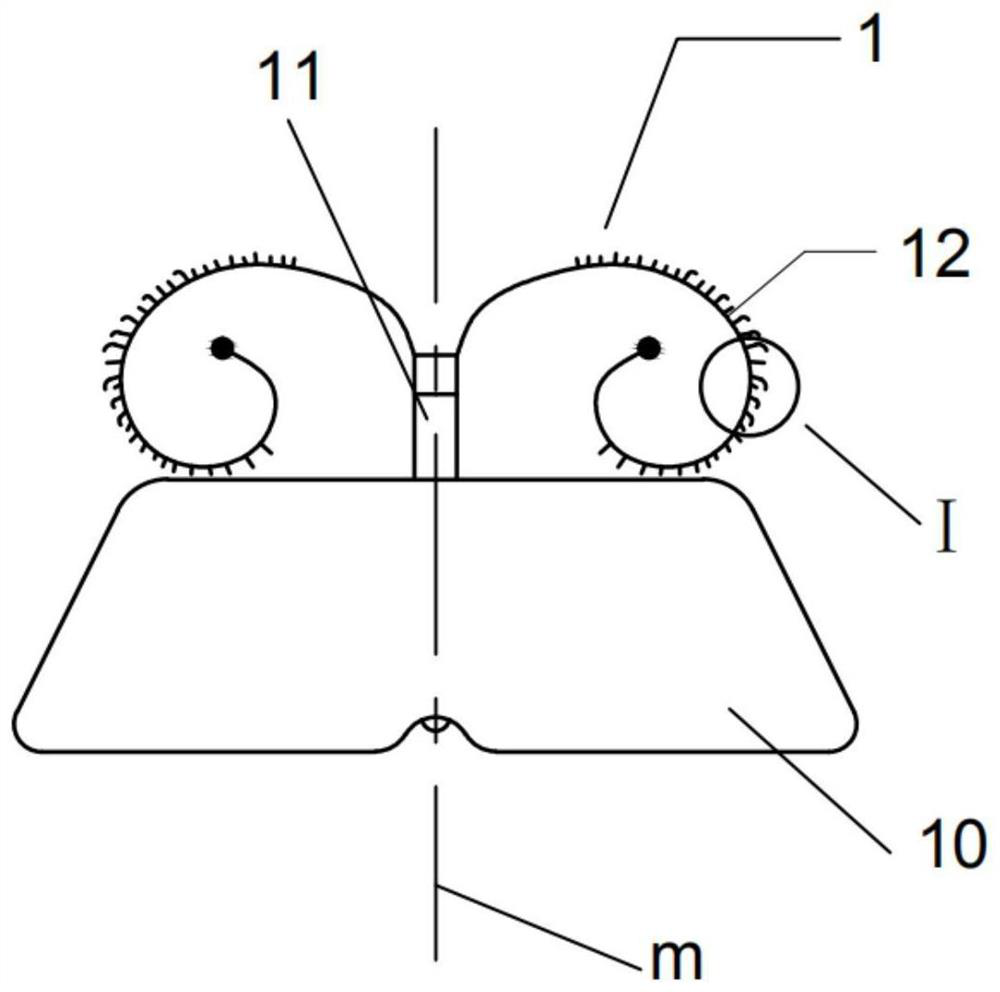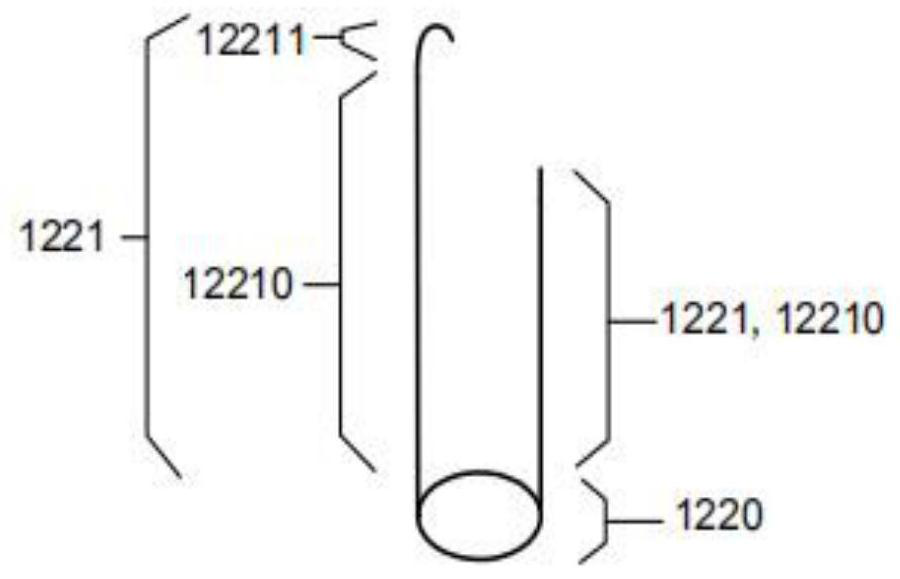Left auricle occluder with bionic spinule attachment structures
A technology of occluder and occluder disc, which is applied in the field of medical devices, and can solve problems such as the barbed structure is easy to pierce the left atrial appendage, cannot adapt to the anatomical shape of the left atrial appendage, and has poor occlusion performance.
- Summary
- Abstract
- Description
- Claims
- Application Information
AI Technical Summary
Problems solved by technology
Method used
Image
Examples
Embodiment 1
[0139] Such as figure 1 and figure 2 As shown, the left atrial appendage occluder 1 with bionic micro-thorn attachment structure provided by the present invention includes an attachment frame 12, and the attachment frame 12 includes a plurality of elastic skeletons 121 and a plurality of bionic micro-thorn attachment structures 122. In this state, a plurality of skeletons 121 diverge from the center outward and form a three-dimensional structure. The attachment frame 12 is adaptive to anatomical shapes. The bionic micro-thorn attachment structure 122 is arranged on the outer surface of the skeleton 121. The shape is the sparse microthorns on the surface of the imitation plant. The bionic microthorn attachment structure 122 includes thorn roots 1220 and microthorns 1221. The microthorns 1221 are composed of sashimi 12210 and thorn points 12211. The microthorns 1221 are linear or J-shaped or With the combination of the two, the sashimi 12210 and / or the thorn point 12211 can t...
Embodiment 2
[0153] refer to Figure 20 a and Figure 20 b, based on the first embodiment, in the second embodiment, the attachment frame 12 includes a surrounding body 123, the surrounding body 123 is wound on the skeleton 121, and at least wraps the thorn roots 1220 attached to the skeleton 121 for strengthening The connection strength between the skeleton 121 and the bionic microthorn attachment structure 122. The design of the surrounding body 123 also has the following advantages: a) the surrounding body 123 avoids direct contact between part or all of the skeleton 121 and the cavity tissue, which reduces the precipitation of metal ions and improves biocompatibility; b) reduces the coefficient of friction and reduces The retraction and release resistance of the attachment frame 12 in the delivery sheath 2; c) increase the smoothness, and experience a better hand feeling; d) enhance the fatigue resistance and durability of the attachment frame 12, and play the role of "secondary prote...
Embodiment 3
[0160] refer to Figure 24 , compared with Embodiment 1 and Embodiment 2, the difference between Embodiment 3 and Embodiment 1 and Embodiment 2 is that the attachment frame 12 is further provided with a flexible second flow-blocking film 124, and the second flow-blocking film 124 is attached and connected to the frame 121, and its design has the following advantages: a) It can achieve the effect of secondary occlusion, and can prevent the existing and possible thrombus 3 from falling off in the inner cavity of the left atrial appendage, and further improve the effectiveness of occlusion and security like Figure 25 As shown; b) has the function of step-by-step obstruction, especially when the attachment frame 12 is just released during the operation (the occlusion disc 10 has not been deployed at this time), it can push the existing thrombus 3 inside the left atrial appendage back to the left The inner cavity of the atrial appendage prevents the thrombus 3 from coming off fro...
PUM
 Login to View More
Login to View More Abstract
Description
Claims
Application Information
 Login to View More
Login to View More - R&D
- Intellectual Property
- Life Sciences
- Materials
- Tech Scout
- Unparalleled Data Quality
- Higher Quality Content
- 60% Fewer Hallucinations
Browse by: Latest US Patents, China's latest patents, Technical Efficacy Thesaurus, Application Domain, Technology Topic, Popular Technical Reports.
© 2025 PatSnap. All rights reserved.Legal|Privacy policy|Modern Slavery Act Transparency Statement|Sitemap|About US| Contact US: help@patsnap.com



